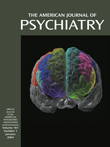This is an ambitious volume in several ways, and, to the credit of the editor and the impressive roster of authors, its ambitions are well met. First, the book’s audience is broad, including both clinicians and researchers. It offers clinicians guidance for treating men and women appropriately in the light of what is known about their different experiences with critical aspects of specific disorders—including levels of vulnerability, patterns of onset and course, and responses to treatment. It offers researchers reviews and critiques of past research as well as suggestions of promising paths for future inquiry. Second, the book’s ambitious substantive program is reflected in its diverse parts: section 1 considers etiological mechanisms underlying gender as a factor in psychopathology, and sections 2, 3, and 4 focus sequentially on the effects of gender on mood and anxiety disorders, schizophrenia, and substance abuse and dependence. Finally, the book presents an ambitious intellectual map of the field: biological and psychosocial explanations of psychopathology, which are so often treated separately, commingle in this volume. Some chapters reflect a single tradition, others consider biological and psychosocial factors independently, and a few explore their interdependence.
In her brief introduction, the editor places definitions of gender on a continuum, with biological factors (e.g., hormones) at one pole and psychosocial factors (e.g., gender roles) at the other. With gender so defined, analysis of psychopathology from both the biological and psychosocial standpoints becomes a necessity; thus, the book’s intellectual map is drawn. This emerges clearly in section 1, three chapters on etiological mechanisms.
In the first chapter, Barbara Parry considers how the cyclicity of women’s ovarian hormones sets the stage for cyclic mood disorders, which are more prevalent in women than men. Next, Sarah Rosenfield considers how socialization resulting in a feminine or masculine self-concept sets the stage for internalizing disorders, which are more prevalent in women, or externalizing disorders, which are more prevalent in men. Finally, Andrew Skodol reviews research on the etiological relevance of biological, psychological, and social factors to forms of personality disorder more prevalent in men (antisocial) or in women (borderline). Noting that most research is done within one intellectual tradition, he makes a strong case for an integrative approach.
Section 2, Mood and Anxiety Disorders, is the longest, with five chapters. Ronald Kessler’s opening chapter reviews and critiques explanatory hypotheses for gender differences in major depression presented in epidemiologic studies from the biological and psychosocial traditions. His critique culminates in a section designed to focus future research along promising lines. The next chapter, coauthored by the book’s editor and Elizabeth Young, suggests that an interaction of biological and psychosocial factors at a critical stage (between 10 and 15 years of age) might explain why depression is more prevalent among adolescent girls than boys. The next chapter, by Michael Thase, the editor, Susan Kornstein, and Kimberly Yonkers, is especially important for clinicians because it reviews the research literature on the gender differences in response to available treatments for depression—including variants of counseling and psychotherapy, antidepressant medications, and ECT. The following chapter, by Naomi Breslau, Howard Chilcoat, Edward Peterson, and Lonni Schultz, reports on a study in which they explored the role anxiety disorders play in depression for women and for men. The next chapter also focuses on anxiety disorders. Authors M. Katherine Shear, Ulrike Feske, and Catherine Greeno review the literature on four psychosocial factors relevant to the greater prevalence of these disorders in women, and they conclude with a discussion of treatment implications.
Section 3, Schizophrenia, comprises only two chapters. The first, by Steven Moldin, offers an overview of research on gender differences in schizophrenia and discusses explanatory theories relevant to neurobiological etiology. He anticipates that gender differences will ultimately be explained genetically. In the next chapter Heinz Hafner analyzes his own research on first-episode schizophrenia to consider gender differences found in different aspects of the disorder, such as antecedent behavior, onset, symptoms, and social consequences. He reports confirmation of some earlier findings and disconfirmation of others.
Section 4 includes three chapters on substance abuse and dependence. In the first, Denise Kandel presents an epidemiologic analysis of gender and age and dependence on four substances: nicotine, alcohol, marijuana, and cocaine. The next chapter, by Remi Cadoret, Kristin Riggins-Caspers, William Yates, Edward Troughton, and Mark Stewart, reports findings of gender differences in their study of adoptees and evaluates the interaction of genes and environment in substance abuse. The final chapter of the book, by Mary Jeanne Kreek, has clinical implications for the differential treatment of addictions in men and women, especially with methadone.

